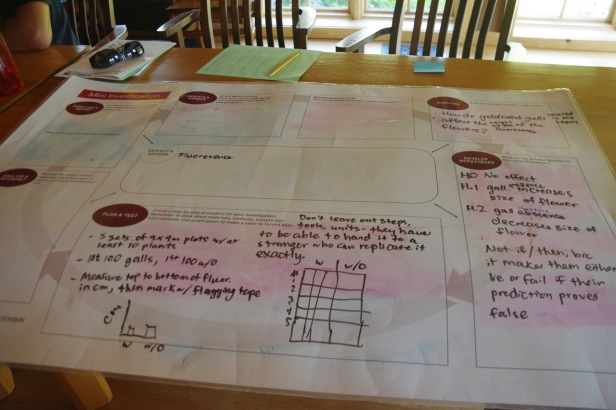I was privileged to attend the North American Monarch Institute (NAMI) three-day course designed for teachers and educators to learn how to lead their students, colleagues, and community in the science and conservation of monarchs. This course was provided through a partnership of Monarch Joint Venture, University of Wisconsin-Madison Arboretum and the US Forest Service – International Programs.
The USFS invited participants from Currier and Wegner Schools in West Chicago and one generalist recommended through the DuPage Monarch Project. There were sixty participants from all over the United States and Mexico.

On Wednesday and Friday, the classes were held at the University of Wisconsin – Madison Arboretum. The Thursday class was held at the Aldo Leopold Foundation in Baraboo, Wisconsin. The first day focused on the biology, ecology and conservation of the Monarch. The second day focused on using the schoolyard for teaching. The third and final day focused on networking, planning and promoting gardens as learning laboratories.

This was an intensive and amazing three days! I was in the company of teachers, museum and nature center staff that included our counterparts from Mexico who help form and maintain this amazing multinational partnership. The instruction was provided by very knowledgeable and passionate NAMI staff, along with presentations on the current efforts to conserve the Monarch in Mexico. The Monarch uses all of North America for the migration and is loved by the people of three countries. The partnership between Canada, Mexico and the United States to strengthen and preserve the Monarch Flyway is vital not only to the conservation of the Monarch but also to other migrating species such as dragonflies, bats and birds. The conservation of all pollinators is strengthened every time citizens of each country plant and cultivate a native garden. So simple, yet many more of us are needed to do so to fully replace lost native milkweed. I want to emphasize native milkweed, but more on that in a future article.

Every student was sent home with a wealth of information, powerpoint presentations, handouts, lesson plans, posters, tools for teaching, hands-on learning activities for all ages and several books to read in our spare time! As the generalist, I hope to support the West Chicago teachers in future projects and to create opportunities to encourage and teach interested members of our community in becoming citizen-scientist participants.
Judith Allyn Horsley has been a certified Master Naturalist since 2012. She began distributing milkweed seeds in 2013 and has distributed over 2500 packets of common milkweed seed. She is a member of West Chicago’s America in Bloom committee, has taught monarch conservation at park district summer camps and is active with the Environmental Stewardship Committee at her church.
All photos courtesy of Judi Horsley.

